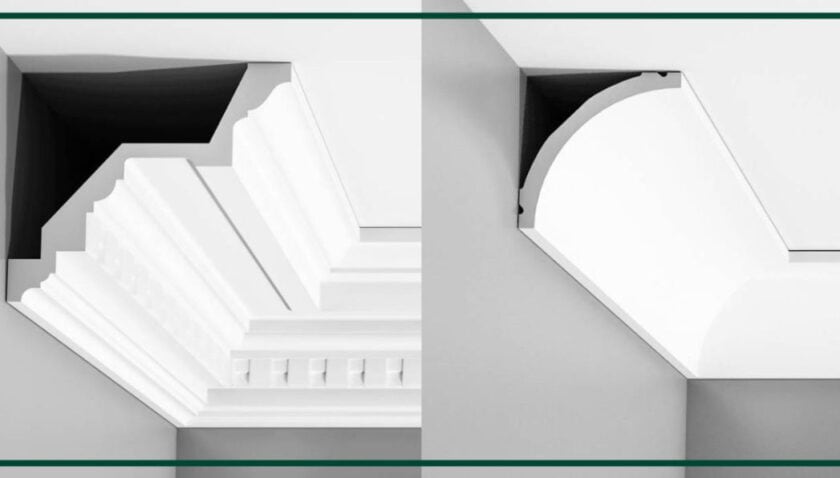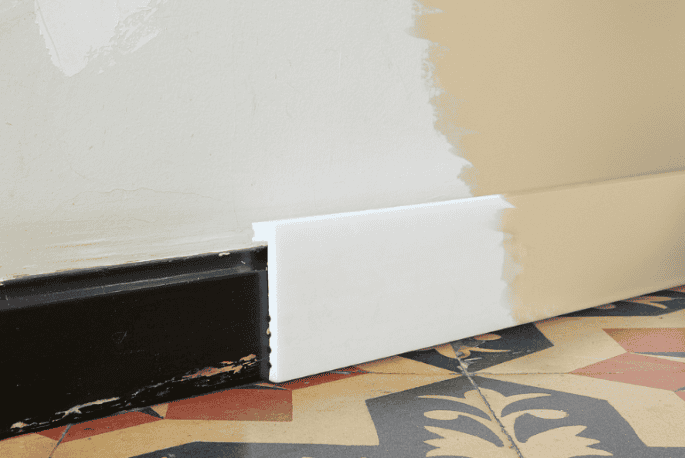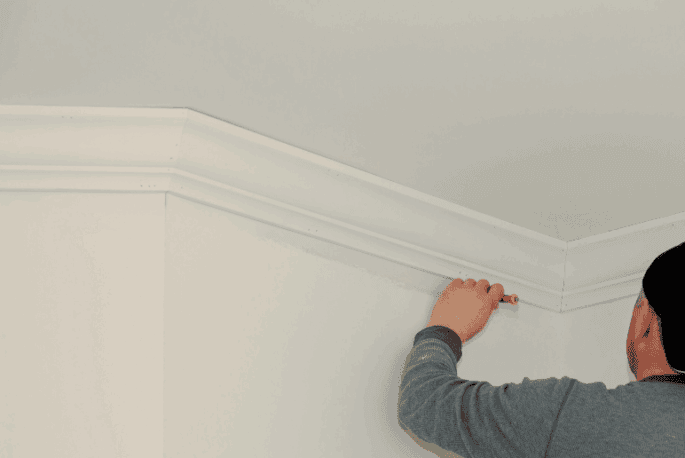What Is The Difference Between Cornice And Coving?

We often get asked, what is the difference between Cornice and Coving? Because these terms are often used interchangeably, but is there any difference between them?
Coving is a type of cornice and in general, Coving refers to a more simple, plain design in the standard C-Shape typically with some linear detail. It is sometimes made from plaster and wood, but more often from a high-grade polymer. It is usually a uniform shape and is the most common method of decorating modern homes without being too obtrusive or overwhelming.
Cornice is a general term and is usually ornate and more decorative with Egg & Dart and Dentil styles being very common. These are made from different materials such as plaster, wood, metal and or course high-grade polymers. Cornice is generally used in period properties and really adds depth and intricacy to any interior. There are no fixed rules whilst coving is more common in modern homes, both terms can be used to describe a variety of decorative mouldings.
Cornices have been in our vocabulary for a long time, The word cornice originated from the Italian word `ledge`. with the first use of cornices dating back to Ancient Greece. Some say they were used as far back as ancient Egypt. Cornices were originally always used on the external facade of buildings providing a finished, uniform look between the walls and roof. They were mostly made from stone or terracotta and were decorated with very detailed intricate patterns. Cornices continued to be used in the Egyptian and Roman architecture and with an even larger range of styles and designs. They were even decorated with statues and other plant motifs. At the end of the Roman empire, cornices weren’t so popular so the use of cornices declined and this continued right throughout the Medieval and Middle Ages, it wasn’t until the Renaissance period that cornices returned and became more elaborate in detail. This was where cornices started to be decorated with complex designs which included details such as flowers, scrolls, animals along with other details. This continued right through to the Victorian Era, and we can see examples of this work today. They were mostly made from plaster and caste from gelatine moulds. In the Edwardian era, cornices became more subtle, and the geometric shapes came into fashion with the Art Deco style cornices for example. The materials stayed much the same and it wasn`t until after the second world war that new revolutionary materials were used such as high-grade polymers which made installation much easier and meant that cornices were used in a much wider market.
Coving and Cornice are not just used for decorative purposes, but also serve as a functional product. This is because they can hide pipes and wires whilst also serving their main function as distinguishing the difference between the wall and the ceiling. Furthermore, Coving and Cornices both hide the crack line which often forms between the ceiling and wall whilst adding value to your home.


